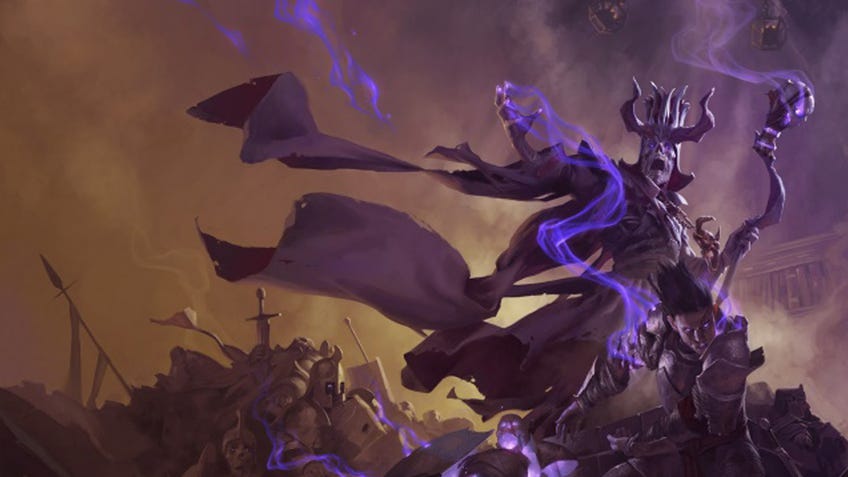Dungeons & Dragons lead designer says 2024 rulebooks will “prepare the game for its next decade”
D&D's publisher wants to see 5th Edition learn to drive and buy its first beer.
In what has become a regular segment chronicling the development of Dungeons & Dragons’ next trio of core rulebooks, game design architect Jeremey Crawford spoke with head of content Todd Kenreck about preparing the popular tabletop RPG for its next decade of play.
The pair spent a significant portion of the 13-minute video clearly explaining that the three books currently planned for mid-2024 will serve as a “continuation of the edition we’ve all been playing since 2014” and not a clean break from the already 10-year-old D&D 5th Edition rules. Wizards of the Coast confused many players (and maybe a few press) when they decreed ‘One D&D’ to be a marketing misnomer and not representative of their design aims.
Instead, Crawford believes the new(ish) Players Handbook, Monster Manual and Dungeon Master’s Guide will both futureproof D&D while also keeping everything released since 2014 effectively backwards compatible. “Our goal is to prepare the game for its next decade,” he said.
All of the books will bear a year-denoting moniker that internal design has apparently been using since at least 2020, according to Crawford. For example, once the three new rulebooks drop a player can own a 2014 Players Handbook and a 2024 Players Handbook for the same edition.
About that: Wizards of the Coast has been very careful not to mention the phrase ‘6th Edition’ or even a waffling ‘5.5E’ when referring to the RPG’s next phase. Crawford admitted “there is no reason for us to stop [5th Edition] and all sorts of reasons for us to continue it”, explicitly pointing to a possible loss of of D&D’s colossal audience who only know the game through the lens of its latest iteration.
Another reason for D&D to keep the 5th Edition branding going? Those adventure books never stopped flying off shelves. “People are still buying Curse of Strahd; people are still going and looking for a copy of The Wild Beyond the Witchlight and Journeys through the Radiant Citadel,” Crawford said. “We want to keep that going.”
So, what does that look like? Crawford said the Unearthed Arcana that have tracked the design teams’ rejiggering of classes will continue into a new phase, one focused on reframing older material using lessons learned over the past decade. For example, subclass progression didn’t elicit much enthusiasm from internal testing, but the team wants to know how the community feels about the rate at which a player-character’s specific class distinction unlocks abilities.
Phase two won’t be particularly splashy or exciting, but it will apparently provide the team opportunities to revisit the 2014 books and refine the material they want to carry forward. Those rules will combine with new material and all the best bits of the existing books to create whatever gets printed and bound next year.
Crawford said to expect a lot more capitalisation going forward as the team wants players to notice at a glance the difference between an explicit mechanic and descriptive text. He gives an example: “Poisoned” is key text indicating a game state in D&D’s engine, while “poisoned” primarily refers to the fiction.
Wizards of the Coast has devoted significant time to justifying a taxonomical tightrope walk during a time when the 5th Edition name is at its most toxic. It might reflect parent company Hasbro’s insistence on doubling down on D&D as an expansive brand, but the player schisms that followed historical rules edition changes are fairly well documented.










